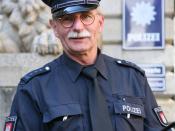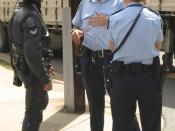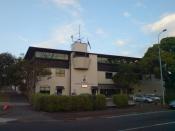Introduction
Despite significant role changes for police in the past 50 years, society still tends to stereotype police officers as law enforcers. The complexity of modern policing, however, frequently encompasses the roles of welfare worker, marriage guidance counsellor, child mincer, mediator, negotiator, first-aider, teacher and ambassador, in addition to law enforcement. The increasing variety of skills that police require to become functionally competent has presented police trainers with a dilemma: given the existing static resource situation, teach only critical survival skills or find alternative training methods
Crime is as old as society itself. Yet social values and priorities change over time meaning the institutions that regulate crime and punishment must adapt. As with most institutions, in a democratic society accountability is an important component for the legitimacy of Canada's police. Inasmuch as Parliament requires democratic legitimacy, Canada's police forces require that citizens accept their authority in their respective communities.
Accordingly, the police in Canada have made a number of structural changes to more accurately reflect the makeup and social values of contemporary Canadian society.
Women in the Police Force:
As social values have changed and the role of the police has adapted accordingly, women have been embraced as productive members of Canadian police forces.
In September 1974, the first woman was recruited as a uniformed regular member.
There are more than 7,000 female police officers in Canada.
Women accounted for 13 percent of police officer positions in Canada, as of 1999.
Women represent a relatively youthful proportion of police officers in Canada (more than two-thirds are under the age of 35, while more than two-thirds of their male counterparts are over 35).
Aboriginal and Visible Minority Police Officers
Police forces are , with mixed results, actively recruiting people from aboriginal and visible minority communities to better reflect the society they...


